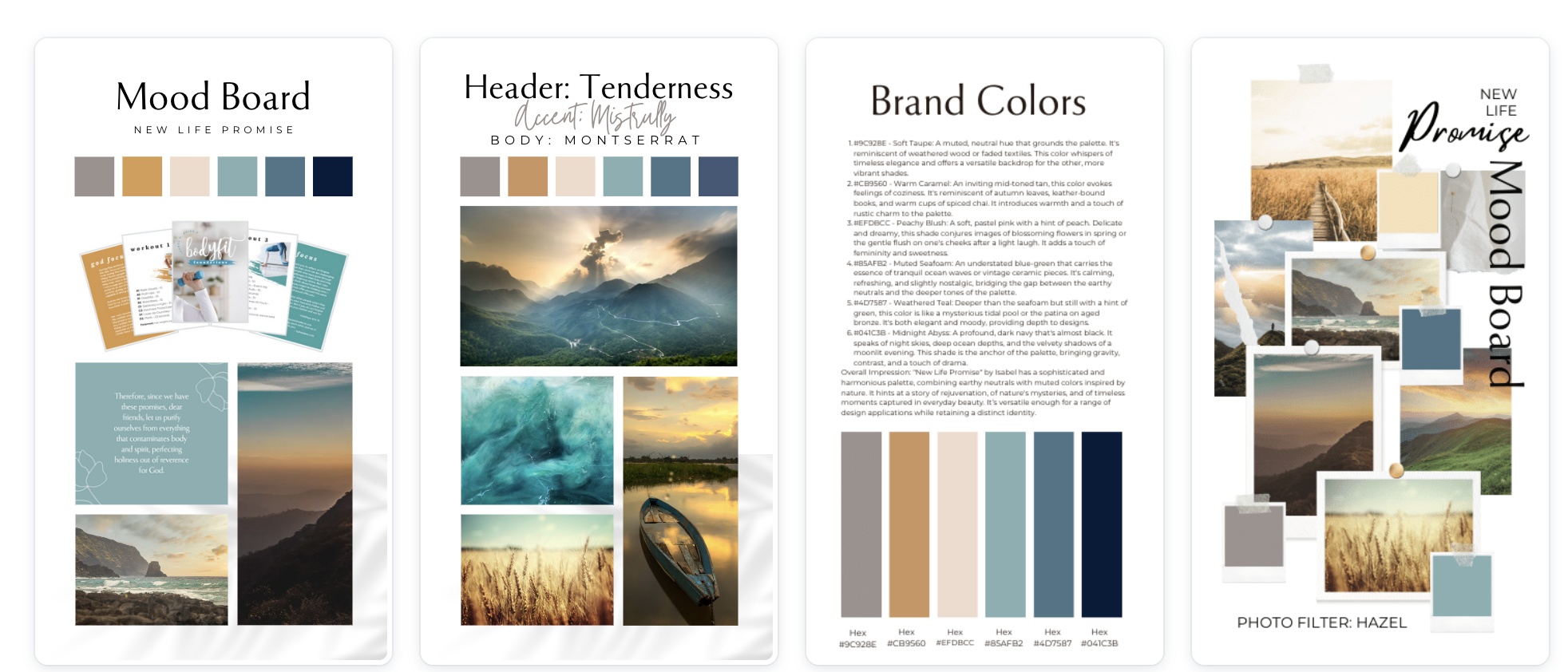The Power of a Brand Kit: Its Importance and How to Use It Effectively
In today’s fast-paced digital landscape, a brand’s identity plays a pivotal role in how it’s perceived by the public. The Brand Kit (Sometimes called a Mood Board) is at the forefront of building this identity—a toolkit that ensures consistency, recognition, and trust. So, what makes a brand kit so crucial, and how can businesses effectively utilize it?
Why is a Brand Kit Important?
- Consistency: Consistency is key in branding. Whether your brand appears on a website, a business card, or a billboard, it should immediately be recognizable. A brand kit ensures that every time your brand is displayed, it has the same look and feel, enhancing brand recall.
- Professionalism: Nothing says ‘professional’ more than a brand that maintains consistent graphics, colors, and fonts. It assures clients and customers that they’re dealing with an entity that values its public image.
- Builds Trust: Over time, as consumers repeatedly see the same branding, they begin to trust the brand more. This trust can translate into customer loyalty and increased sales.
What Does a Brand Kit Typically Contain?
- Logo: This includes variations of the logo (horizontal, vertical, monochrome, etc.) and guidelines on how to use them.
- Color Palette: A defined set of primary and secondary colors that represents the brand, along with their specific codes for digital and print use.
- Typography: Specific fonts and styles to be used in different contexts, ensuring text elements remain consistent.
- Imagery Guidelines: Recommendations for the type of images and photos that resonate with the brand’s persona.
- Stationery Designs: Pre-designed templates for business cards, letterheads, and other stationery items.
- Other Brand Elements: This can include icons, patterns, or any other design elements unique to the brand.
How Can a Brand Use the Kit? Simply put, the brand kit should be the go-to reference for anyone creating content for the brand, be it digital or print. From designing a new webpage, creating a social media post, launching a marketing campaign, to even printing new business cards—refer to the brand kit. It ensures that all materials align with the brand’s identity, voice, and overall messaging.
Common Mistakes in Branding:
- Inconsistency: Perhaps the most frequent mistake, often brands will use different logos, colors, or fonts across different platforms. This hampers brand recall and can confuse the audience.
- Overcomplication: Keeping it simple is often the best approach. A complicated logo or too many colors can be off-putting and hard to reproduce accurately.
- Following Fads: Just because neon colors or a particular design is trending doesn’t mean it fits your brand. It’s essential to stay true to the brand’s core identity.
- Not Updating the Brand Kit: Brands evolve, and so should the brand kit. However, updates should be purposeful and not too frequent, so as not to alienate the existing customer base.
- Ignoring Feedback: Customers and employees can offer valuable insights into how the brand is perceived. Ignoring such feedback can lead to missed opportunities for improvement.
A brand kit isn’t just a collection of logos and colors; it’s the very essence of a brand’s identity captured and presented in a cohesive manner. By understanding its importance, knowing its contents, and avoiding common branding pitfalls, businesses can leverage their brand kit to create a lasting and favorable impression in the market.
Examples of Mood Boards/Brand Kits I’ve Created:
Eyes Up World
Live a Life Beyond
New Life Promise
